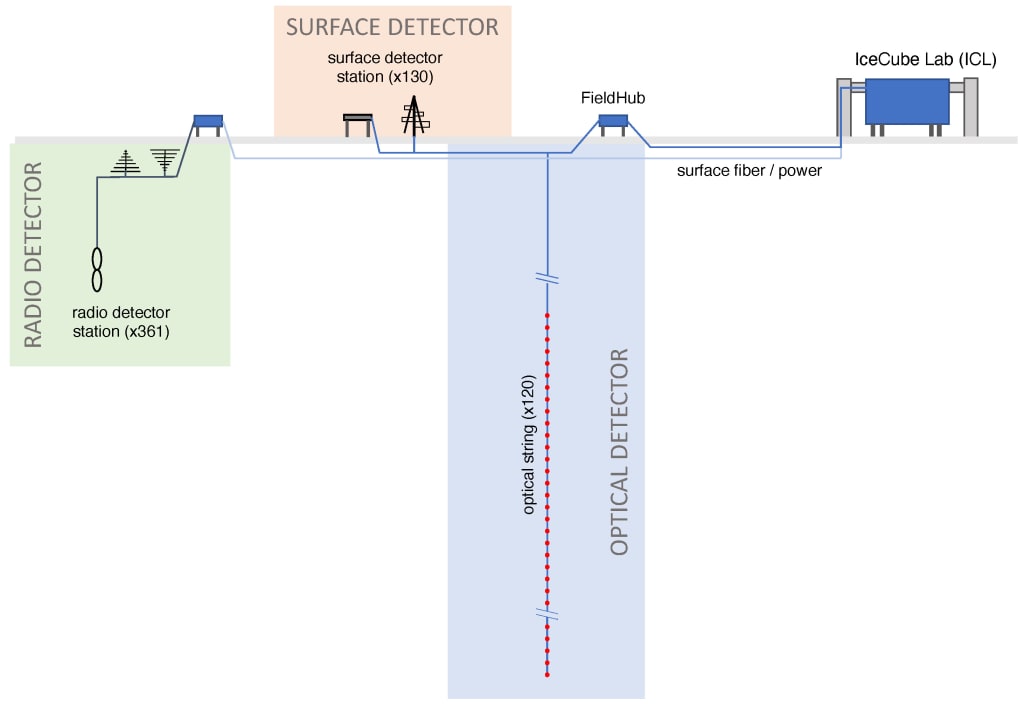Publications – Technical Design Report (TDR)

IceCube-Gen2 Technical Design Report
Parts I and II, July 2023
Part III, June 2024
(Note: Download file for Parts I and II (LINK) is 75MB and Part III (LINK) is 28MB.)
The vision of IceCube-Gen2 emerged soon after the IceCube Neutrino Observatory reported the discovery of a cosmic neutrino flux at high energies in 2013. The first conceptual design was presented as early as 2014 at a meeting in Arlington, VA. Since then, we have optimized the design and made significant technical improvements. In addition, the emerging radio detection technology was added to the conceptual design in order to significantly expand the sensitive energy range of the observatory.
This document presents a preliminary design of IceCube-Gen2. Its purpose is threefold, to define a) the science case, b) the technical design to meet the science goals, and c) the approach to the construction at the South Pole. These three goals are laid out in three parts.
Part I, Science and Conceptual Design, presents the scientific goals, and the performance and sensitivity parameters. It is based on the IceCube-Gen2 science white paper.
In Part II, Detector and Performance, readers will find the technical design and performance benchmarks. We present how the technical designs derive from the science requirements for the various detectors used in the IceCube-Gen2 optical, radio, and surface arrays. We also offer solutions for data transfer and processing as well as calibration strategies.
Part III, Detector Construction and Logistical Support Requirements, provides a detailed explanation of the challenges of constructing this next-generation observatory with an instrumented volume almost an order of magnitude larger than IceCube. The logistics of transporting 10,000 sensors to the South Pole, drilling 120 holes to a depth of 2600 meters into the most transparent ice, and deploying the surface and a 500-km2 radio array are laid out. They include cargo and population requirements as well as high-level information about cost estimation.
The document intends to serve a broad audience for different purposes. The community and collaboration will find here the authoritative reference. Decision-makers and representatives of funding agencies will find a complete definition of IceCube-Gen2. Experimentalists working on other projects may find useful technical approaches in this document.

